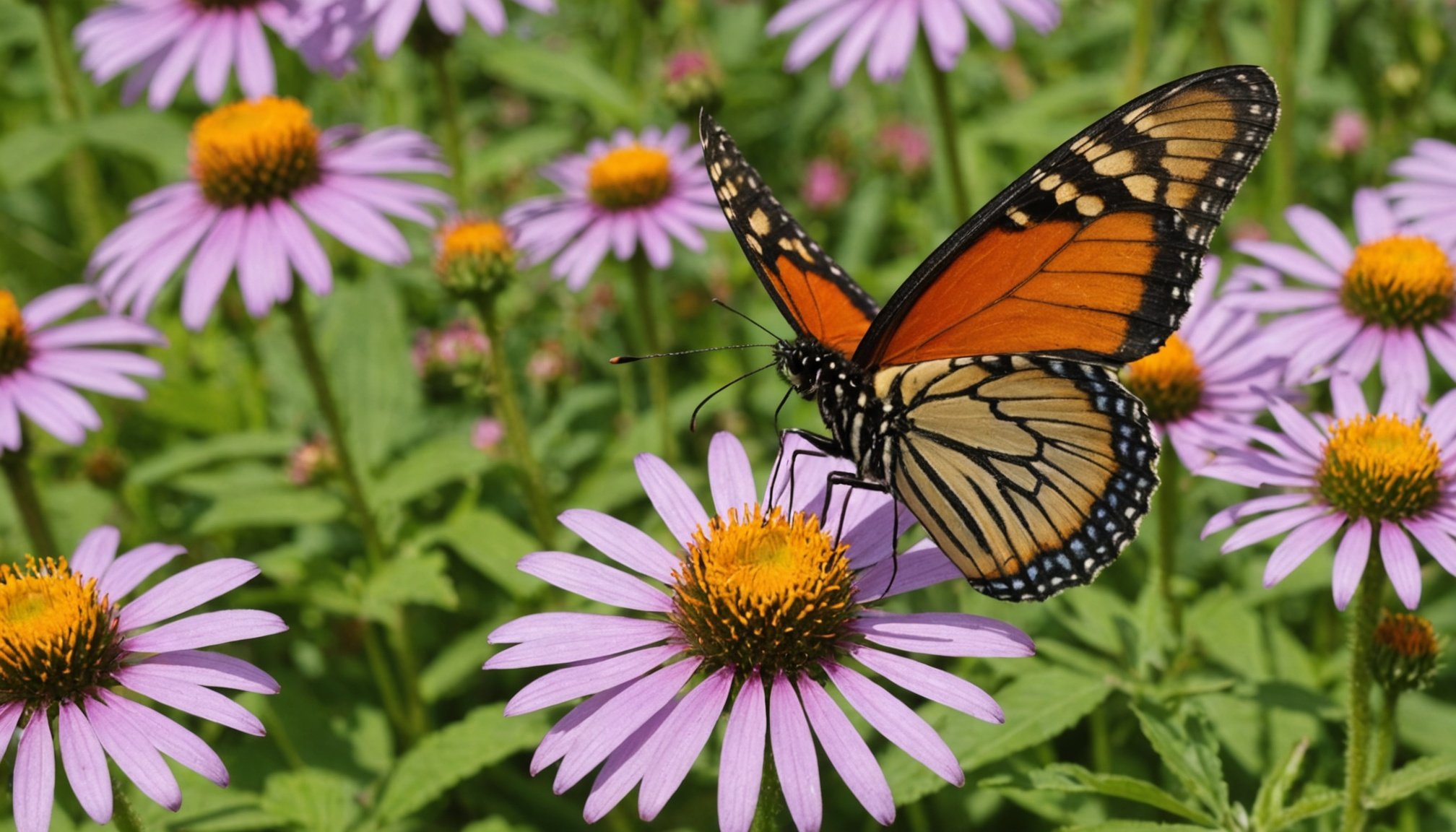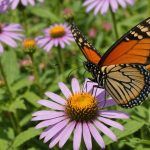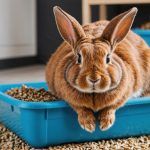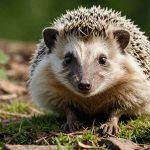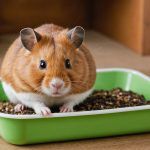Essential Plants for UK Gardeners: How to Attract and Support Native Butterfly Species
Creating a garden that attracts and supports native butterfly species is a rewarding and environmentally beneficial endeavor. Here’s a comprehensive guide to help you choose the right plants, understand the needs of butterflies, and maintain a vibrant butterfly garden.
Understanding Butterfly Needs
Butterflies have four distinct life stages: egg, larva, chrysalis, and adult. Each stage requires specific resources and habitats. Here’s a breakdown of what you need to know:
Also to read : Uncovering the Legal Framework: How the UK Tackles Illegal Poaching of Protected Wildlife
Host Plants for Caterpillars
Butterfly larvae, or caterpillars, are often specific about the plants they feed on. For example, the monarch butterfly (Danaus plexippus) relies exclusively on milkweed plants (Asclepias spp.), while the painted lady (Vanessa cardui) can feed on over 200 different plant species.
- Common Nettle: Essential for species like the Red Admiral and the Small Tortoiseshell.
- Bird’s-foot Trefoil: A host plant for the Common Blue butterfly.
- Blackthorn: Hosts the caterpillars of the Brown Hairstreak butterfly.
Nectar Rich Flowers for Adult Butterflies
Adult butterflies feed mainly on nectar, which provides them with the energy they need to fly and reproduce. Here are some nectar-rich flowers that are perfect for your garden:
Also read : How UK Zoos Are Safeguarding Animal Health: Strategies to Combat Disease Spread
- Buddleja (Butterfly Bush): Known for its vibrant purple, pink, and white flowers, Buddleja is a magnet for butterflies. It is particularly attractive to species like the Painted Lady and the Red Admiral.
- Scabious: With its long-stemmed, compound flowers in shades of pink, purple, and dark red, Scabious is a favorite among bees and butterflies.
- Monarda (Bee Balm): This plant comes in a variety of colors, including dark red, purple, and white, and is known for attracting bumblebees and butterflies.
Choosing the Right Plants
When selecting plants for your butterfly garden, it’s crucial to consider both native and non-native species, as well as their potential impact on the environment.
Native Plants
Native plants are generally the best choice because they are more likely to attract native butterfly species and provide the necessary resources for their entire life cycle.
| Plant Name | Host Species | Nectar Source | Bloom Time |
|---|---|---|---|
| Common Nettle | Red Admiral, Small Tortoiseshell | No | May – October |
| Bird’s-foot Trefoil | Common Blue | Yes | May – September |
| Blackthorn | Brown Hairstreak | Yes | March – May |
| Buddleja | Various species | Yes | June – August |
| Scabious | Various species | Yes | May – November |
| Monarda | Various species | Yes | June – September |
Non-Native Plants
While non-native plants can provide floral resources, they can also have negative effects on local ecosystems. It’s essential to check invasive species lists to ensure that the plants you choose are not harmful.
- Buddleja: Although it is non-native, Buddleja is widely used in UK gardens for its butterfly-attracting properties. However, it can be invasive, so regular maintenance is necessary to prevent it from spreading.
Planting and Maintaining Your Butterfly Garden
Creating a butterfly-friendly garden involves more than just planting the right flowers. Here are some tips to help you get started and keep your garden thriving.
Sunlight and Exposure
Butterflies are cold-blooded and need warmth to fly, so choosing a spot that receives full sun or partial shade is crucial.
- Buddleja: Prefers full sun or partial shade and can thrive in both exposed and sheltered locations.
Soil and Fertilization
Butterflies don’t directly benefit from fertilizers, but healthy plants do. Here’s how to fertilize your plants without overdoing it:
- Mulching: Adding a layer of compost or mulch each spring helps retain moisture and reduce weed growth. For potted plants, a slow-release fertilizer can be beneficial.
Watering and Puddling
Butterflies need water for drinking and to extract minerals from mud, a behavior known as “puddling.”
- Puddling Grounds: Create a shallow dish or area with mud and water to provide a source for male butterflies to gather and drink nutrients.
Practical Tips for Gardeners
Here are some practical tips to make your garden more attractive and supportive of native butterfly species:
Plant Diversity
Plant a variety of flowers that bloom at different times to provide a constant source of nectar throughout the summer.
- Summer Blooms: Plants like Buddleja, Scabious, and Monarda are perfect for summer as they provide rich flowers that attract adult butterflies.
Avoid Pesticides
Pesticides can harm or kill butterflies and other pollinators. Instead, use natural methods to control pests.
- Natural Pest Control: Encourage beneficial insects like ladybugs and lacewings, which prey on garden pests without harming butterflies.
Provide Shelter
Butterflies need shelter from wind and extreme weather. Incorporate trees, shrubs, and other plants that can provide this protection.
- Windbreaks: Use native trees and shrubs to create windbreaks that also serve as larval food and overwintering grounds for butterflies.
Examples of Butterfly-Friendly Plants
Here are some detailed examples of plants that are particularly beneficial for attracting and supporting native butterfly species in the UK:
Buddleja (Butterfly Bush)
Buddleja is often referred to as the “butterfly bush” due to its immense popularity among butterflies. It comes in a variety of colors, including purple, pink, and white, and is known for its sweet nectar that attracts bees and butterflies alike.
- Varieties: The Buddleja alternifolia is less invasive and has slender leaves with branches that often hang downwards, giving it a weeping willow-like character.
Scabious
Scabious is another favorite among butterflies and bees. Its compound heads of flowers come in a range of colors including pinks, purples, and dark reds.
- Long-Stemmed Flowers: These flowers are held on long stems, making them ideal for mixed pots or standalone plantings.
Monarda (Bee Balm)
Monarda, or bee balm, is known for its tall stems and slightly fluffy or ragged blooms that attract bumblebees and butterflies.
- Variety of Colors: Monarda comes in a range of colors from dark red through to purples and pinks to pure white, making it a versatile addition to any garden.
Creating a butterfly garden is not just about planting flowers; it’s about providing a complete habitat that supports the entire life cycle of these beautiful creatures. By choosing the right plants, maintaining a healthy garden, and avoiding harmful practices, you can contribute significantly to butterfly conservation.
As Peter from the Horticulture UK notes, “Buddleja has slender leaves and its branches often hang downwards, meaning its character is a little like a weeping willow.” This kind of detail highlights the unique characteristics of each plant and how they can enhance your garden.
By following these guidelines and incorporating a variety of native and carefully selected non-native plants, you can turn your garden into a vibrant haven for native butterfly species. Remember, every small step in gardening for wildlife can make a big difference in the long run.
Additional Resources
For further reading and to stay updated on the best practices for butterfly gardening, here are some resources you might find useful:
- Lepidoptera Societies: These societies provide detailed lists of host plants and nectar sources specific to different butterfly species.
- Invasive Plant Atlas: This resource helps you identify and avoid invasive plant species that could harm local ecosystems.
- Gardening for Wildlife: Many gardening organizations offer newsletters and guides on how to create wildlife-friendly gardens, including those specifically for butterflies.
By combining these resources with the practical tips and plant recommendations provided here, you can create a butterfly garden that is both beautiful and beneficial for these incredible creatures.

